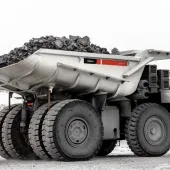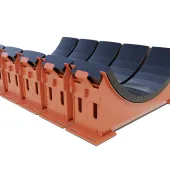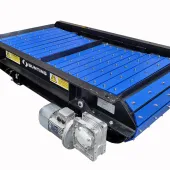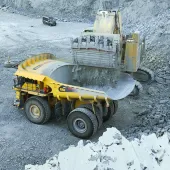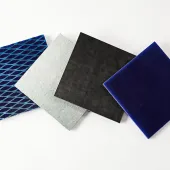Wear protection from Kingfisher Industrial helps save money in tough economic times

In economic downturns, especially of the type and severity currently being experienced in the global market, the focus for users of process plant inevitably becomes repair, rather than replacement, should plant and equipment fail. In such adverse climates, capital expenditure budgets are inevitably squeezed, or frozen altogether, and the pressure is on maintenance engineers to make the best with what they’ve got.
In normal economic times, the cost and time pressures that process industries are subject to generally dictates that, in breakdown situations, the fastest solution available becomes the preferred option. However, the larger or more specialist a piece of plant, the less likely it is to be available quickly, so repair then becomes the default option. At lower levels of activity, though, repair becomes the preferred option due to its inherent cost benefits. As evidence of this, wear-protection specialists, Kingfisher Industrial have calculated that the cost of repairing plant and equipment such as transfer chutes, hoppers and silos, grinding mills and classifiers, screens and underpans, tanks, cyclones and separators, fan casings, feeders and conveyors, ducts and driers, etc averages around one-third that of buying new.
John Connolly, managing director of Kingfisher Industrial, said: ‘Repair of worn equipment, or perforated pipework is a really viable option at any time, but more so during periods of belt tightening. Using a combination of ceramic, metallic and polymer lining systems, we have had overwhelming success in protecting equipment and extending the service life of process plant and equipment that, without intervention, would otherwise have been designated as scrap.
‘Our experience is that every installation requiring repair or refurbishment using wear protection has its own specific requirements in terms of lining material. There is no ‘one-size-fits-all solution’, due to the levels of abrasion of different conveyed materials. This contrasts with the procedures in many companies today, where the method of repair with wear protection is almost exclusively based upon applying hard metal deposits using traditional welding methods.
‘Although this can work in some instances as a means of extending plant life, it is not cost effective because it does not eradicate the continual problems experienced in many applications.’
Kingfisher Industrial say that by applying the correct lining material, users can actually get more life from their plants than they thought possible. This is because, once repaired or protected, the equipment will continue in service for much longer than had originally been planned. The fact that the plant operates for longer also means long-term savings on maintenance costs and downtime. In addition, the improved efficiency of the lining material also generally results in improved productivity. The latter benefit results from the low friction nature of the lining material, which reduces energy usage and allows a greater volume of material to be discharged, or throughput.
Wear protection also lends itself to the repair process, as it offers the flexibility to be implemented at any time during the life of process plant and equipment. In addition, most equipment is designed to allow access for cleaning, repair or replacement, so as long as the substrate of the original equipment is not compromised through excessive wear or corrosion, then it can continually be repaired in situ. Even if the substrate is compromised, by utilizing Kingfisher’s engineering operatives, be it on or off site, it can be brought back to a suitable working condition for reuse by re-plating incorporating suitable surface preparation and protection. An additional benefit of repairing in situ is that it removes major requirements for expensive plant hire, including lifting equipment and specialist personnel to remove and replace.
The case for repair rather than replacement was underlined recently in an application undertaken by Kingfisher for a major power generator on Braithwaite tanks that held cooling water containing highly abrasive ash. The tanks were 30 years old and considered past their life expectancy. However, as an alternative to costly replacement, Kingfisher consulted with the end user’s facilities management contractor and put forward a proposal for refurbishment.
The proposal involved Kingfisher in undertaking a structural NDT inspection, mechanical refurbishment activities and lining of the tanks with the company’s K-ALOX ceramic lining system to protect against erosion and corrosion internally.
The alternative to Kingfisher’s proposal was both difficult and costly. It involved stripping out the old tanks, which are made up of multiple panels approximately 4ft square, removing the structures from 200ft up inside the station, and then undertaking the lifting, fitting and commissioning activities associated with fitting the new tanks and connecting of the ancillary feed and discharge pipework.
‘We have a tremendous amount of experience of supplying and installing wear protection systems in the power generation market,’ commented John Connolly. ‘This was instrumental in our proposing a refurbishment strategy for the Braithwaite tanks project. The effectiveness of the strategy can be judged from the fact that it cost just one-quarter of the alternative of replacing the old tanks with new units.’



